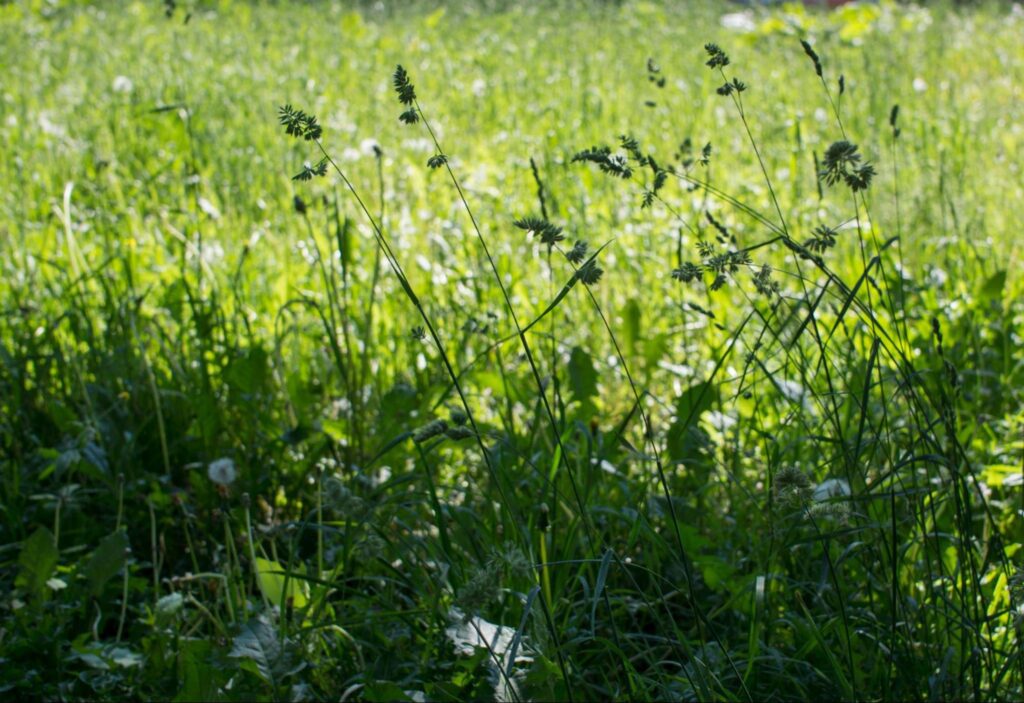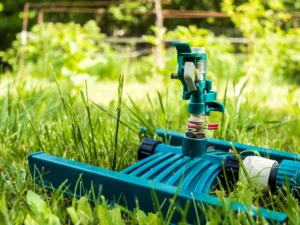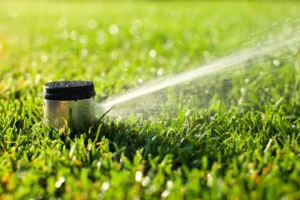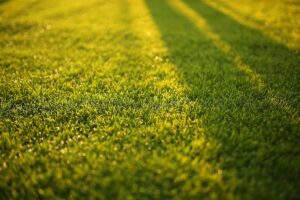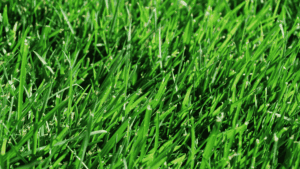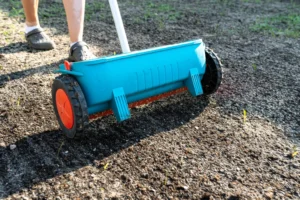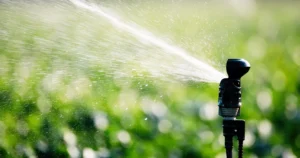When it comes to maintaining a lush, vibrant lawn in Atlanta, proper fertilization is key. But, overfertilization can wreak havoc on your grass, leading to nutrient imbalances and damaging your lawn’s health. At WeedPro, we’ve made it our mission to help homeowners in Georgia fight against overfertilization in order to keep their lawns health and resilient. In this comprehensive guide, you’ll learn how to identify the signs of overfertilization and the steps you can take to reverse its effects, ensuring your outdoor space thrives throughout the year.
Understanding Overfertilization
Overfertilization occurs when your lawn receives more nutrients than it can handle, causing an unhealthy growing environment. While fertilizer provides essential nutrients such as nitrogen, phosphorus, and potassium, too much can disrupt the balance your crop needs to thrive. Fertilizer acts as food for your lawn, but even a good thing can become a bad thing if overused. This condition disrupts the balance needed for optimal growth, resulting in a host of complications. Simply but it’s bad lawn care technique.
Why Fertilization Is Important
Fertilization is essential for lawn vitality, providing key nutrients like nitrogen, phosphorus, and potassium. These nutrients support root development, enhance color, and promote plant vigor. Without proper fertilization, your lawn may struggle to grow, exhibit dull colors, or become susceptible to disease.
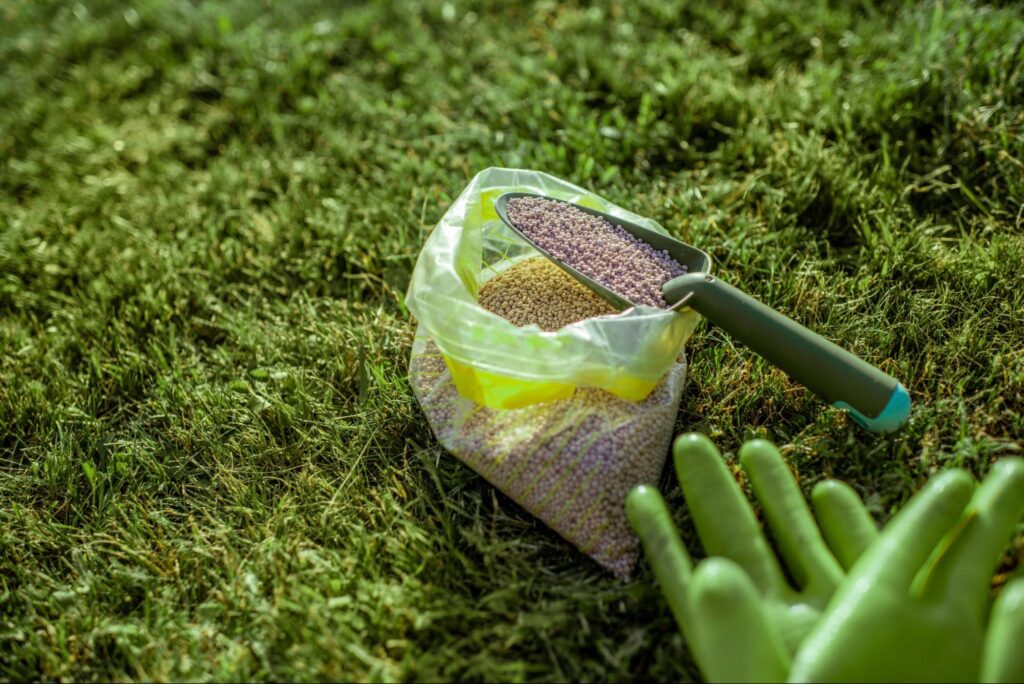
Common Causes Of Overfertilization
Overfertilization is a common mistake in lawn care that stems from several common issues, including:
Excessive Application: Applying excessive amounts of fertilizer, especially granular fertilizer, can quickly lead to an overload of nutrients. This mistake often results in salt buildup, water absorption issues, and visible stress symptoms in your lawn.
Poor Soil Conditions: Soil that is compacted or has poor drainage can further exacerbate the problem, preventing nutrients from being properly absorbed.
Uneven Application: Not spreading fertilizer evenly can create hotspots that burn your grass.
Incorrect Timing: Applying fertilizer at the wrong time can disrupt your lawn’s natural growth cycle.
Recognizing The Symptoms Of Overfertilization
The effects of overfertilization can manifest in several identifiable symptoms. Understanding these signs is crucial for timely intervention.
Signs To Look For In Your Lawn
Here are some indicators that your turf might be suffering from overfertilization, with symptoms often appearing on the grass blades:
Fertilizer Burn: Burned and burning grass blades are a common sign of an over fertilized lawn. You can recognize this as brown, crispy patches that resemble burn marks, this is the first sign of trouble.
Brown or Yellow Grass Tips: If your grass is showing stress, it will likely exhibit browning at the tips.
Excessive Growth: While you want your lawn to flourish, a fertilized lawn can sometimes show unusually rapid growth followed by decline, making the grass more susceptible to disease.
Salt Buildup: Look for crusty white deposits on the soil surface, indicating an unhealthy concentration of salts.
Pest Infestations: A weakened lawn attracts pests that can further aggravate the situation. Weeds may also invade weakened turf.
Bare Spots: Bare spots may develop where grass has died due to overfertilization, leaving areas of exposed soil.
Identifying Overfertilization In Your Plants
If you’re also dealing with flowerbeds or garden plants, those can show signs of stress, including:
Leaf Yellowing: Watch for wilting lower leaves, which can indicate nutrient overload.
Browned Tips: Browning at the tips and margins of leaves is a clear signal of distress.
Root Damage: Checking roots for blackened or limp areas can help identify an overload situation.
Defoliation: Sudden leaf loss can be an alarming symptom of overfertilization.
How To Reverse Overfertilization
Once you’ve identified the signs of overfertilization, it’s time to take action. Here’s a guide to reversing its effects.
Immediate Steps To Take
Flush with Water: The first step is to thoroughly water the affected area to leach excess fertilizer from the soil. This helps to dilute the fertilizer and remove excess nutrients from the soil. If fertilizer has been accidentally spilled, remove as much as possible before watering.
Remove Damaged Grass: Consider cutting off any dead or damaged grass to allow new growth to come through.
It may take about a week for the lawn to show signs of recovery after these steps, so be patient and monitor progress throughout the week.
Long-Term Solutions For Recovery
Adjust Fertilizer Application: Reassess your fertilization habits. Switch to a slow release fertilizer to provide a steady supply of nutrients and reduce the risk of over fertilize issues. Use less lawn fertilizer next time and follow recommended guidelines for timing and quantity.
Improve Soil Conditions: Consider investing in soil amendments to enhance drainage and nutrient balance. If a soil test shows low pH, adding lime may be necessary to correct the imbalance and promote healthy grass growing. As your lawn recovers from being over fertilized, new grass growing will happen gradually, helping restore a healthy, green lawn. If nutrient concentrations in the soil exceed the upper limit, it may be necessary to leach the soil to rid it of excess nutrients and restore healthy growing conditions.
Managing Overfertilization in Potted Plants
Lawns aren’t the only part of your home than can be overfertilized. Potted plants are especially vulnerable to overfertilization because excess fertilizer can quickly build up as soluble salts in the potting medium. When these salts accumulate, they can damage plant roots, making it harder for the roots to absorb water and nutrients, and increasing the risk of root diseases. If you notice your potted plants showing signs of stress, such as wilting, yellowing leaves, or stunted growth, it may be time to check for soluble salt buildup.
To manage overfertilization in potted plants, start by monitoring the salt levels in the potting mix. A simple way to do this is with a conductivity meter, which measures the concentration of soluble salts. If the levels are high, leaching is an effective solution. Leaching involves thoroughly watering the plant until water drains freely from the bottom of the pot, helping to flush out excess salts. Repeat this process a second time after a few hours or the next day to ensure the salts are fully removed.
For proper fertilization, always use slow-release fertilizers and follow the recommended application rates for your specific plants. This approach provides a steady supply of nutrients without overwhelming the roots. By practicing careful fertilization and regular leaching, you can keep your potted plants healthy and thriving.
Reseeding and Aerating the Lawn
If your lawn has suffered from excess fertilizer, reseeding and aerating are key steps to help it recover. Start by removing any dead grass and debris from the affected areas to create a clean slate for new growth. Next, apply fresh grass seed to bare or thin spots, and lightly cover with a thin layer of soil to encourage germination.
Aerating the lawn is equally important, especially after over fertilization. Using a lawn aerator, remove small plugs of soil throughout the lawn. This process improves drainage, reduces soil compaction, and allows air, water, and nutrients to reach the root zone more effectively. Aeration also helps break up any remaining fertilizer that may have accumulated in the soil, reducing the risk of further damage.
Regular aeration and reseeding not only repair the immediate effects of over fertilization but also promote stronger, deeper roots and healthier grass growth in the long term. By incorporating these practices into your lawn care routine, you can restore your lawn’s vitality and prevent future issues related to excess fertilizer.
Preventing Future Overfertilization
Taking proactive measures can prevent the recurrence of overfertilization issues.
Best Practices For Fertilization
Follow Guidelines: Always adhere to manufacturer guidelines about the amount and type of fertilizer suitable for your lawn.
Use the Right Amount: Conduct soil tests to find out what your lawn truly needs, making it easier to apply the right amount of nutrients.
Timing Applications: Fertilize at optimal times for your lawn, which often means planning around seasonal weather patterns that affect growth.
Custom Fertilization Plans
At Weed Pro, we offer tailored fertilization plans that cater to the specific needs of your lawn while considering its unique soil conditions and growth habits. This type of plan can dramatically reduce the chances of overfertilization in the future.
Fertilizer Options for Lawns
Choosing the right fertilizer is essential for maintaining a healthy lawn while avoiding the risks of over fertilization. There are several types of lawn fertilizers to consider:
Organic fertilizers like compost or manure release nutrients slowly, improving soil structure and supporting long-term grass health. They’re a great choice for those interested in organic gardening and minimizing environmental impact.
Inorganic fertilizers—available as granular or liquid products—provide a quick boost of nutrients but can lead to over fertilization if not applied carefully.
Slow-release fertilizers are designed to deliver nutrients gradually over time, reducing the risk of nutrient overload and fertilizer burn.
Before selecting a fertilizer, conduct a soil test to determine the current nutrient levels in your lawn. This will help you choose the proper amount and type of fertilizer for your specific grass and soil conditions. By matching your lawn’s needs with the right fertilizer and following recommended application rates, you’ll encourage healthy growth, avoid excess fertilizer, and keep your lawn looking its best.
Conclusion
Overfertilization can be a concerning issue for your lawn, but by recognizing the signs and adjusting your fertilization practices, it’s possible to reverse damage and maintain a thriving outdoor space. Implementing proper fertilization techniques and being vigilant about symptoms ensures your lawn stays healthy and beautiful, allowing you to fully enjoy your outdoor oasis.
Frequently Asked Questions
What are the signs of overfertilization in my lawn?
Common signs of overfertilization include fertilizer burn with brown patches, yellow or brown grass tips, excessive growth, salt buildup on soil, and increased pest infestations.
How can I reverse the effects of overfertilization?
To reverse overfertilization, flush the area with water to dilute excess nutrients, remove damaged grass, and reassess your fertilization practices by using the correct amounts and timing.
Can overfertilization affect my garden plants?
Yes, overfertilization can lead to symptoms like leaf yellowing, browned leaf tips, root damage, and defoliation in garden plants, indicating excess nutrients in the soil.
What causes overfertilization in lawns?
Overfertilization is often caused by excessive application of fertilizers, poor soil conditions, uneven application, and incorrect timing of fertilizer use.
What is the best way to prevent future overfertilization?
Prevent future overfertilization by following manufacturer guidelines, conducting soil tests to determine nutrient needs, and timing applications according to seasonal growth patterns.
Does soil condition affect fertilization effectiveness?
Absolutely! Poor soil conditions, such as compaction and inadequate drainage, can exacerbate overfertilization issues and prevent nutrients from being absorbed efficiently.

